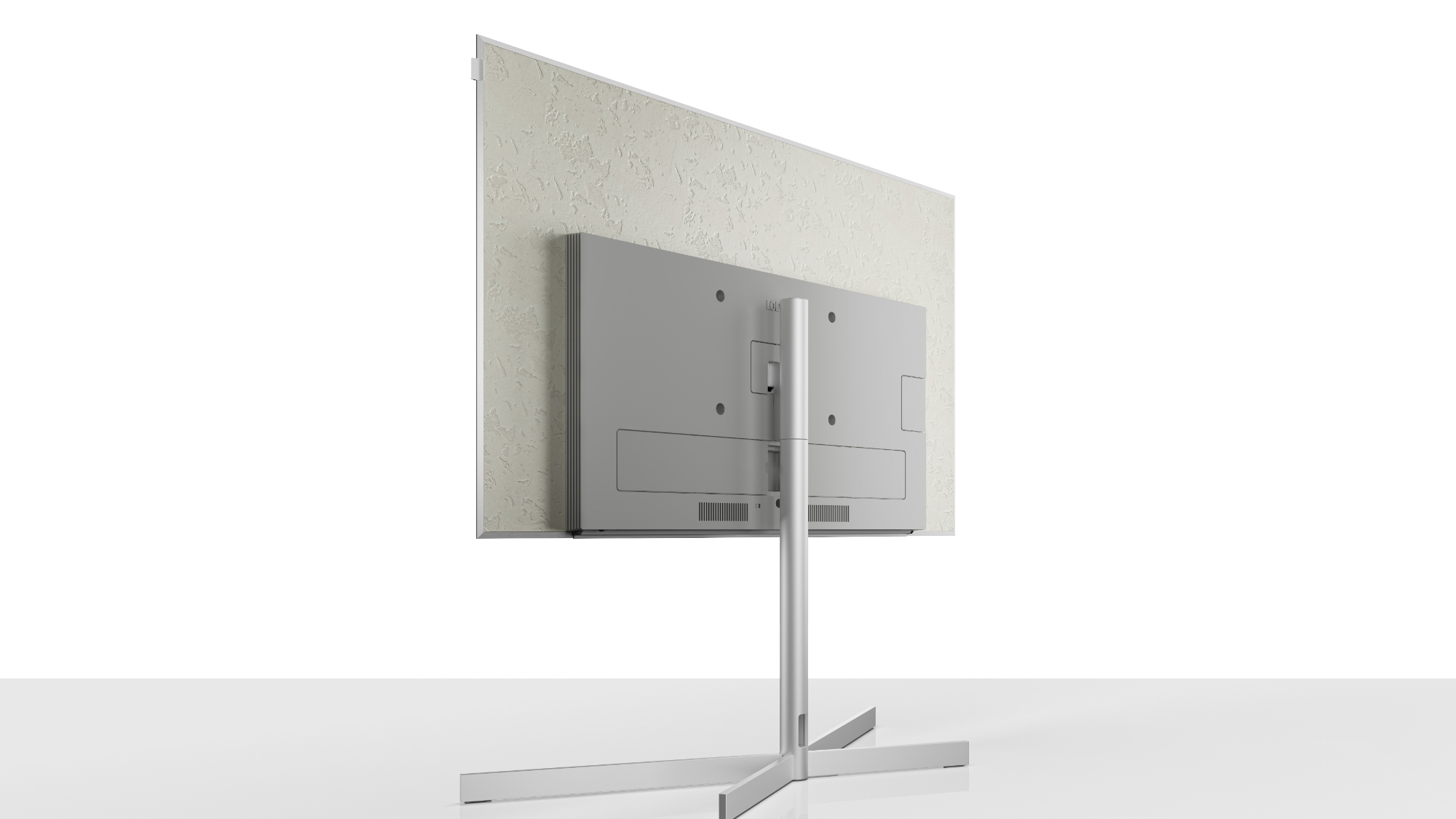
Loewe has just unveiled its new Stellar OLED TV, about which there are a number of interesting elements. Firstly, Loewe is itself manufacturing the OLED panels (which feature brightness-boosting MLA technology), using components supplied by LG but customised and assembled in Germany. No other manufacturer takes this approach.
It also has a rear panel constructed of cement. Why? For an unusual and premium look and feel, I suppose – not to mention the striking 'TV made of cement' headlines.
Also interesting, if you're an HDMI-obsessed AV nerd like me, is the fact that the Loewe Stellar has four HDMI 2.1 sockets, all of which support 4K/120Hz, VRR and ALLM (144Hz is supported, too, but that's not particularly useful at this stage).
For years, LG and Samsung have been the only brands to offer four HDMI 2.1 sockets, with all other brands, including Sony, Panasonic, Hisense and TCL, all producing TVs with two at most. In all cases, one of those HDMI 2.1 sockets has also been the eARC port, leaving you with just one top-notch input if you need to connect a soundbar or AV receiver via eARC.
We've been moaning about this for years, so how come Loewe has managed to solve an issue that many 'bigger' TV brands have not? The answer is that it's using a different HDMI chipset to those other brands.
The HDMI chipset being used by Loewe for the Stellar is a new Novatek model, and it's not actually the first time we've heard about it. At the Philips launch in February, the brand dropped the eye-widening revelation that while its new flagship models will have just two HDMI 2.1 sockets, some of its more entry-level models will have four. Philips' Danny Tack explained to me that this is because the top models are using the same MediaTek Pentonic 1000 HDMI chipset that all brands except Samsung and LG use for their premium models, but that the entry-level models are getting the new Novatek chip.
If it sounds backwards that the entry-level models of a range would get a 'higher-spec' chip than their flagship siblings, Danny Tack explained that the more premium models would have more advanced picture processors, making it a trade-off between picture quality and the number of HDMI 2.1 sockets.
Does that mean Loewe is sacrificing picture quality by using the Novatek chipset? Not necessarily. I got the impression from Tack that the issue for Philips was porting their existing processing to a different chipset. If Loewe is taking a from-scratch approach, which seems to be an overall theme of this Stellar TV, I don't see why the Novatek chip would hold it back – though, of course, the proof of the pudding will be in the testing.
So why aren't brands such as Sony, Panasonic, Hisense, TCL et al taking the Loewe approach and swapping Mediatek for Novatek? Like Philips, it's possibly the issue of porting existing processing hardware and software to a new chipset. Perhaps they feel that investing in such a project isn't worthwhile when having more HDMI 2.1 sockets is only important to a relatively small portion of buyers – especially when Mediatek's roadmap apparently (according to Danny Tack) includes a Pentonic chipset with four HDMI 2.1 sockets.
Regardless, Loewe should be applauded for taking a different approach and resisting the status quo. If only it would produce a more affordable model – I could live without the cement if that would bring the price down...
MORE:
Check out our hands-on impressions of the new Loewe Stellar TV
Here's everything you need to know about HDMI 2.1 and the related eARC
These are the best TVs you can buy right now







